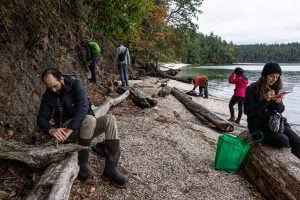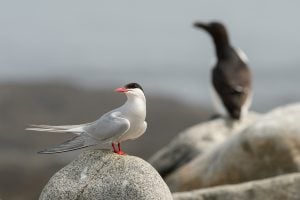Antigua was Britain’s most valuable Caribbean colony by the 1700s. For protection from hurricanes and enemy navies and for access to the trade winds, there were no better anchorages in all the West Indies than the island’s southern Falmouth and English harbours, and the Admiralty turned the area into a tropical stronghold.
Today you’re more likely to see dozens of yachts flying as many countries’ flags than a fleet of British cargo and gun ships, and the coastlines are divided between forested hills, restored naval dockyards and stone forts, marinas and boutique hotels.
The Catamaran, at the head of Falmouth Harbour, isn’t a converted Georgian historic site, nor is it much like the opulent resorts from my Antigua image searches. But it’s precisely what I’d hoped: comfortable and clean, and furnished with a story all its own. Owner Feona Bailey and her children have run the inn and marina since it passed to her from her father, Hugh Bailey, one of Antigua’s great sailors.
For decades he had cared for the little retreat’s original owners, an older British couple, taxiing them around, performing repairs and running their errands, and after both had died he was stunned by a lawyer who called with news that the whole property had been left to him.
Today the lush grounds and my tasteful room relay that this place is still loved. The bed comforter is patterned like the blooming hibiscus shrubs outside, and the morning reveals a balcony view of a small groomed beach and milky-blue water opening up into the harbour. It inspires me to take a morning swim, which is how I discover that I failed to pack swim trunks.
That’s why I’ve been lazing in the Catamaran’s outdoor lounge area watching land crabs and house geckos (and wondering how long cotton shorts take to air dry) for half an hour when John Henry of J.H. & Son taxi service pulls up in his black SUV. He’s been hired to guide me around the island for the week, collect me from beaches and after boat rides. Henry is a lifelong Antiguan, a local historian and, it turns out, a riveting storyteller with a wry wit. He might be 45 or 65. He eventually tells me 67.
After a good laugh at the expense of my packing skills, Henry begins a welcome lesson on the fruit groves and plantations we’re passing on our tour of Fig Tree Drive, on the western rainforest side of the island — papaya, coconut, banana and pineapple to name but a few — how they grow and which country roads have the best fruit stands. His father was head gardener at Jolly Beach resort and a prolific farmer, and it rubbed off.
“Take that banana tree,” he says. “The plant gives you but one bunch, then it’s gotta die. The bunch is the heart of the plant. If you take a man’s heart from his chest, what’s gonna happen?”
I’ll never look at a banana the same way, I admit.
Henry talks also about the villages along our purposely roundabout route, many named for the last plantation owners on the land: Swetes, John Hughes, Bolans, Jennings. The British, who started colonizing Antigua in 1632, eventually answered Europe’s booming demand for sugar by covering the island — and many others — with sugarcane and by shipping in African slaves to plant, cut and process it. Slaves weren’t emancipated until 1834, and it was decades before many former slaves and their children benefited from their freedom, and longer still before tourism replaced the cane as Antigua’s economic mainstay.







